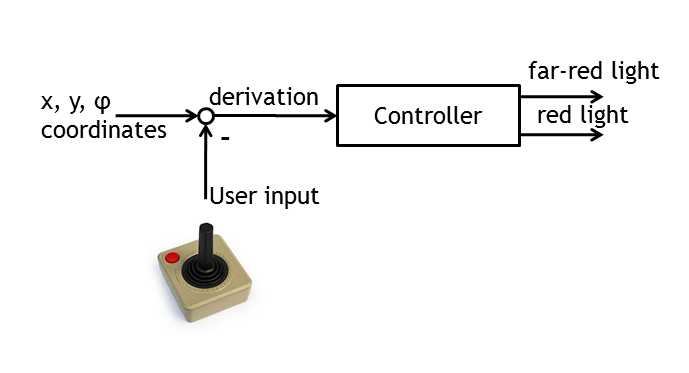Team:ETHZ Basel/InformationProcessing/Controller
From 2010.igem.org
(→Introduction) |
(→Controller) |
||
| Line 15: | Line 15: | ||
As far as we are aware of, no theoretical controller design algorithm exists that can tackle with all of this challenges. To nevertheless develop several implementations which afterward can be compared in terms of performance, we decided to start a controller design competition between the team members (see next paragraph). Since, due to time restrictions, the controllers had to be developed before the biological assembly of the E. lemming, all controllers were developed on the basis of the model of the E. lemming (one of the several reasons why this model was developed). In the following we first present the rules for the competition, which also include a measure for the performance of a controller, and afterward the different approaches developed by our team members together with their evaluation. | As far as we are aware of, no theoretical controller design algorithm exists that can tackle with all of this challenges. To nevertheless develop several implementations which afterward can be compared in terms of performance, we decided to start a controller design competition between the team members (see next paragraph). Since, due to time restrictions, the controllers had to be developed before the biological assembly of the E. lemming, all controllers were developed on the basis of the model of the E. lemming (one of the several reasons why this model was developed). In the following we first present the rules for the competition, which also include a measure for the performance of a controller, and afterward the different approaches developed by our team members together with their evaluation. | ||
| + | |||
| + | == Controller Design Competition == | ||
Revision as of 19:00, 16 October 2010
Controller
Introduction
The controller has as inputs the direction the E. lemming is currently swimming and the reverence direction set by the user. The controller algorithm is responsible to induce red and far-red light pulses to minimize the average difference between the two directions. It is executed with the same frequency as images are made in the microscope.Although closed loop controller design is an over 60 years old scientific discipline, some of the properties of the network composed of the in-silico and in-vivo sub-parts, is making this task intractable for most theoretical controller design strategies:
- The chemotaxis network is highly nonlinear.
- Tumbling occurs stochastically.
- The angular change during tumbling is not predictable, neither the direction nor the absolute value.
- During straight swimming the angle is changing stochastically, too (although not as much as during tumbling).
- Microscope, cell detection and tracking, and the approximation of the current angle of the E. lemming sum up to a time delay of approximately one second.
- The approximated angle is highly noisy.
As far as we are aware of, no theoretical controller design algorithm exists that can tackle with all of this challenges. To nevertheless develop several implementations which afterward can be compared in terms of performance, we decided to start a controller design competition between the team members (see next paragraph). Since, due to time restrictions, the controllers had to be developed before the biological assembly of the E. lemming, all controllers were developed on the basis of the model of the E. lemming (one of the several reasons why this model was developed). In the following we first present the rules for the competition, which also include a measure for the performance of a controller, and afterward the different approaches developed by our team members together with their evaluation.
 "
"



